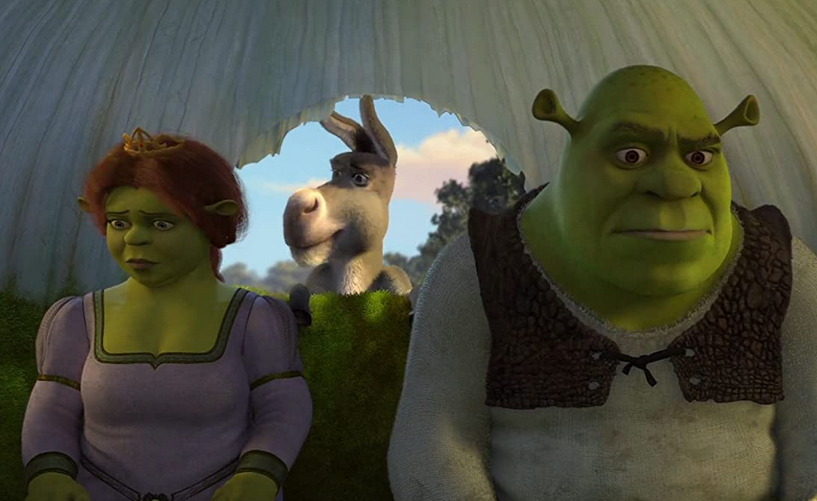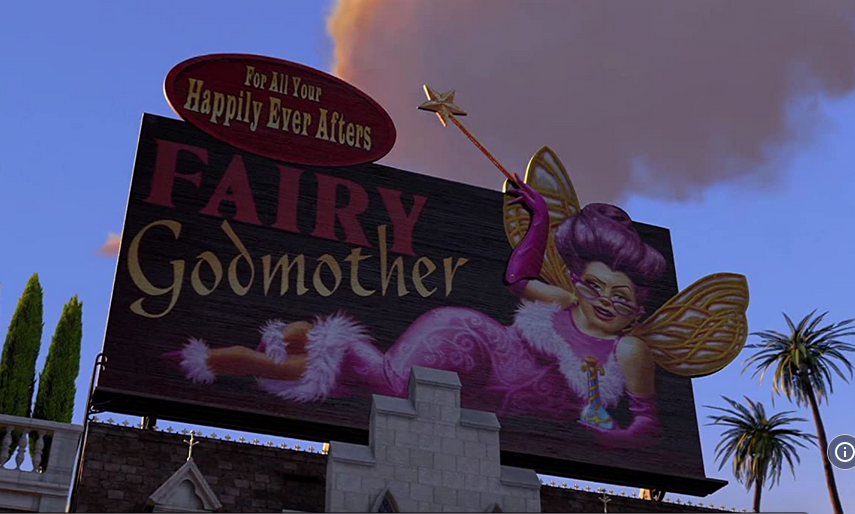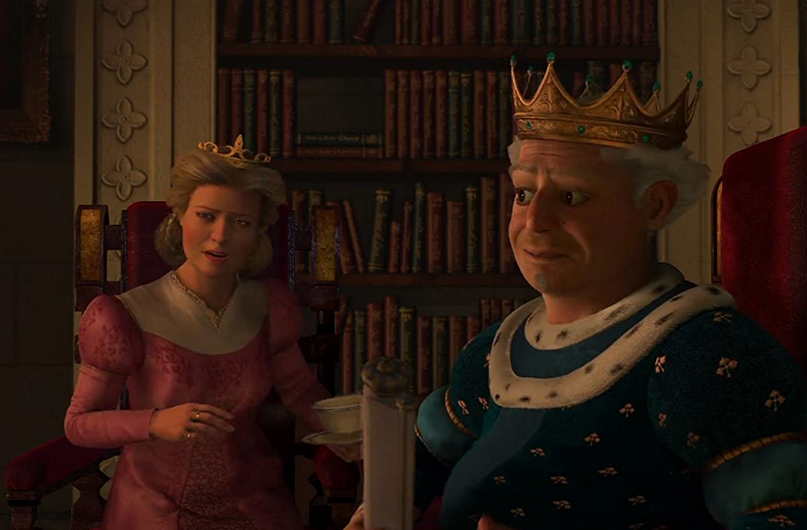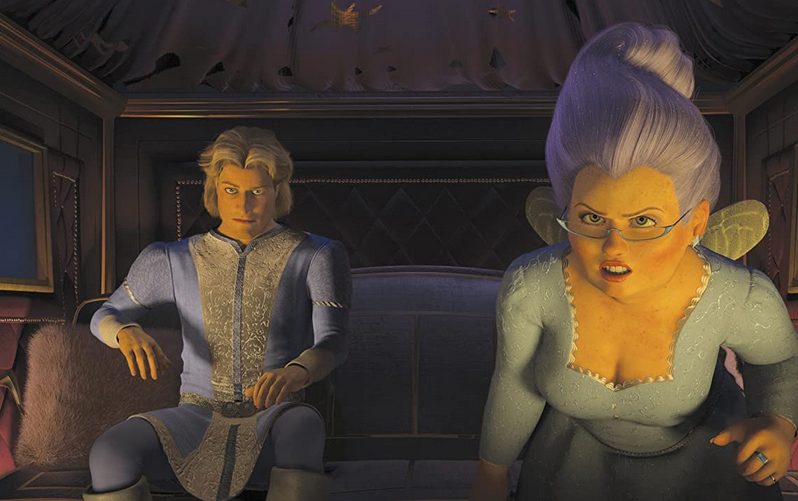Shrek 2 Review
From his beginnings in a humble children’s book, penned by an 80-something New Yorker cartoonist, Shrek has taken various forms: beloved family movie, multi-billion dollar corporate asset, scorned (and often X-rated) meme. Yet the way in which Shrek—and other childhood staples like Spongebob—have been aggressively repurposed by their grown-up audiences to express the awful reality of adulthood suggest that for all the farts, burps, and All Star in its soundtrack, the story managed to communicate something that stuck.
Shrek refuses to die—partly because it bucked the role of children’s fables by subtly inducing anxiety rather than reassurance. While its creators set out to parody the Disney fairytale—a morality play imparting traditional values through a combination of threat and consolation—Shrek simply confirmed a change of setting for the fable, from medieval fantasy-land to a Hollywood realm in which ‘traditional values’ no longer offer security. In the second instalment, the Fairy Godmother turns to a bookshelf to explain that ogres don’t “live happily ever after”, pulling out Sleeping Beauty, Hansel and Gretel, Thumbelina—and then Pretty Woman. It’s both a joke and a truism about Hollywood’s influence on modern identity—especially since the Fairy Godmother parodies an LA plastic surgeon. Book Shrek was a crude, homegrown exhortation to self-acceptance; film Shrek offered an early foreshadowing of the corporate wellness industry, and the present vogue for self-love through self-modification.
Of course, Shrek’s cultural influence is also down to the fact that the first two movies are brilliant. Shrek 2 honed the formula for aughts kids movies seeking a broader appeal: visual wonders and slapstick for the younger viewers, with a slew of pop-culture references and adult jokes for their chaperones. But the two elements are not entirely separate. Shrek seamlessly aligned the fairytale realm with parodies of Hollywood and corporate America, instilling a subtle but considerable degree of skepticism in children spotting the Starbucks logo or the Hollywood sign in Far Far Away. For its young (and vast) audiences, Shrek actually shouldered the same role of moral guidance which it satirized in fairytales—and perhaps the heavy dose of world-bitten irony in the storytelling leaked into its message of self-acceptance as well.
Shrek 2 delighted its audiences in 2004 by playing timeless themes (acceptance, love, courage) in a self-referential and consciously ‘modern’ way—most evident in a deluge of film and TV references, which range in obscurity from a trumpet fanfare of Hawaii Five-O, to quotes from 70s game show hosts. While many such nods have aged even further into irrelevance, the two issues which the film tries to address semi-seriously have not.
I do so wish that the creative team behind Shrek 2 had not confirmed its elements of racial commentary. Alas, we have producer Jeffrey Katzenberg’s description of the sequel as ‘Shrek meets Guess Who’s Coming To Dinner’, in case the shot-for-shot parody of the OJ Simpson car chase left any room for doubt. The sequel’s story offers a distinctly less serious imitation of the latter 1967 Sidney Poitier film about a black man meeting his white girlfriend’s hostile parents: Shrek (Mike Myers), Fiona (Cameron Diaz) and Donkey (Eddie Murphy) leave their swamp to visit her parents, rulers of Far Far Away, a medieval-styled LA populated exclusively by European fairytale creatures. While Queen Lillian (Julie Andrews) seems open-minded, King Harold (John Cleese) does little to dispel Shrek’s concerns that he won’t be welcome “down at the country club”. Special mention goes to the heated discussion about the future baby’s appearance, which has obvious parallels with another recent dispute between British royals in LA.
King Harold wants Fiona to marry Prince Charming (Rupert Everett), a blustery egotist with curtains, entitlement issues, and an extremely pushy mum—the Fairy Godmother (Jennifer Saunders), who intends to use all of the fairytale-slash-Hollywood magic she can to get him in line to the throne. Aside from being one of the most entertaining British mothers in recent American film—neither frumpy nor mild-mannered, and regularly cited as ‘iconic’ on Gay Twitter for her cover of ‘I Need A Hero’—the Fairy Godmother is a send-up of the LA cult of the body. ‘Happiness is just a tear away’, she promises Fiona, after a song-and-dance routine that apes Disney transformation sequences, offering to ‘vanish your blemishes, tooth decay, cellulite thighs will fade away… Nip and tuck here and there, to land that prince with the perfect hair.’ (The Fairy Godmother shares the sentiments in Kanye West’s The New Workout Plan, released in the same year, albeit swapping “a rapper, an NBA player, or at least a dude with a car” for a prince.)
Shrek 2 achieved massive success—commercially, with audiences, and even with critics—by providing irreverent entertainment whilst fulfilling its more serious ‘moral’ obligations as a children’s film. Yet to a large degree, it did so by making the moral obligations into the entertainment, and doing so expertly. The ending message of self-acceptance—with the Fairy Godmother defeated and Shrek and Fiona choosing to become ogres again, leaving their cosmetically altered forms and Far Far LA—can’t compete with, let alone eclipse, the previous hour of showstopping Hollywood sleaze. Offering one message from its overt plot, and a competing interpretation from the enticing torrent of adult in-jokes, Shrek 2 plays directly to the childish wish to ‘be a grown up’, prefiguring the tangled vacuum of self-love, self-alteration and the Hollywood fairytale that its audiences would grow into.
Áine Kennedy is a London-based writer and manager of the ScriptUp blog.
